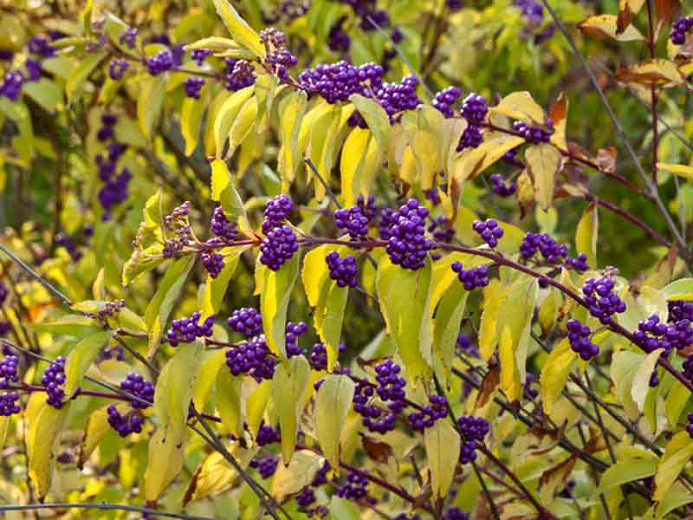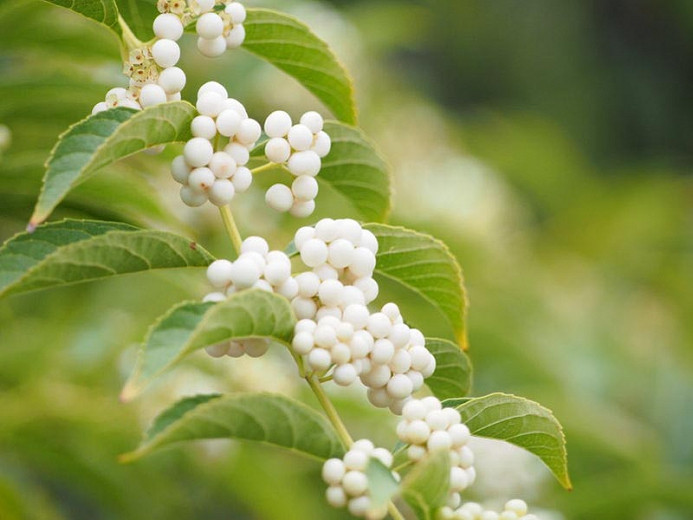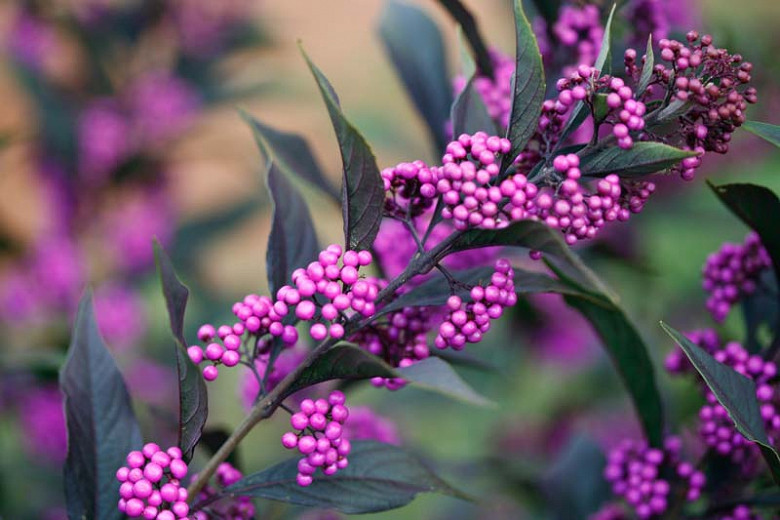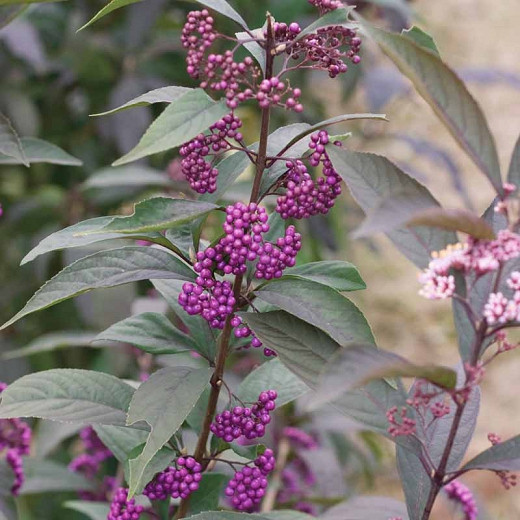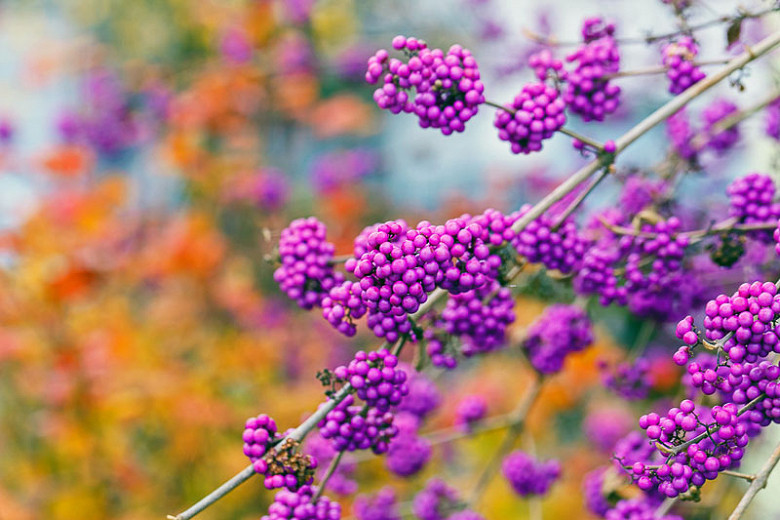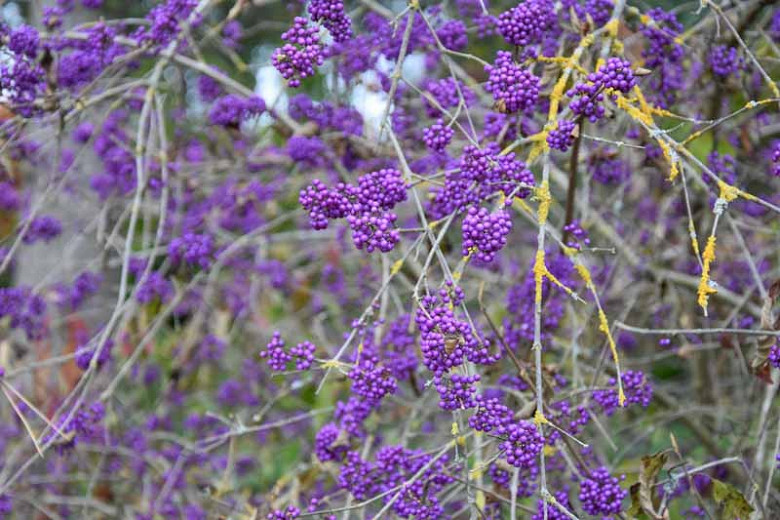Callicarpa japonica (Japanese Beautyberry)
Prized for its richly colored berries that grace the plant throughout the fall, Callicarpa japonica (Japanese Beautyberry) is a small, rounded, deciduous shrub. Elegant with its slender, upright branches, arching over and kissing the ground at their tips in a cascading or weeping effect, Callicarpa japonica bears clusters of small, pink flowers along its stems in early summer. Although charming, the flowers are fairly inconspicuous and not showy from a distance. Attractive to bees and butterflies, they are abundantly followed by clusters of luminous, glossy, violet to purple fruits in late summer, which may persist after the leaves have fallen and stand out beautifully. They are attractive to birds who will happily feast on them. Adding rich color and splendor to the fall landscape, they make a lovely contrast with the foliage of elliptic, finely toothed, medium green leaves, that turns yellow with a purplish cast in the fall. Easy to grow, Callicarpa japonica species is native to Japan.
- Grows at a quick rate, with a bushy and rounded habit, up to 4-6 ft. tall and wide (120-180 cm).
- A full sun to part shade lover, this plant is easily grown in average, medium moisture, well-drained soils. Best flowering and fruit production occurs in full sun. May become leggy in too much shade. Some drought tolerance.
- While cold hardy, this plant may die back to the ground in harsh winter areas (USDA hardiness 5) with new growth emerging from the roots in spring
- Easy to grow and low maintenance, this plant is bothered by very few pests and diseases. It may occasionally be affected by leaf spot, stem diseases and black mold.
- Mass in mixed shrub borders, foundation plantings. Perfect also as specimen plant or deciduous hedge or screen. Best fruit production occurs when these Beautyberry shrubs are planted in groups or massed (better cross-pollination).
- Blooms on new growth. Prune stems back to 6 in. (15 cm) in late winter to early spring to encourage compactness and flowering
- Easily transplanted, it requires regular pruning to keep it well groomed.
- Callicarpa japonica species is invasive in Alabama. As an alternative, use Callicarpa americana (American Beautyberry)
- Native to Japan.
Requirements
| Hardiness | 5 – 8 |
|---|---|
| Heat Zones | 3 – 12 |
| Climate Zones | 2B, 3A, 3B, 4, 5, 6, 7, 8, 9, 14, 15, 16, 17, 18, 19, 20, 21, 22, 23, 24 |
| Plant Type | Shrubs |
| Plant Family | Callicarpa – Beautyberries |
| Exposure | Full Sun, Partial Sun |
| Season of Interest | Summer (Early,Mid,Late)Fall |
| Height | 4' – 6' (120cm – 180cm) |
| Spread | 4' – 6' (120cm – 180cm) |
| Spacing | 48″ – 72″ (120cm – 180cm) |
| Water Needs | Average |
| Maintenance | Low |
| Soil Type | Clay, Loam, Sand |
| Soil pH | Acid, Neutral |
| Soil Drainage | Well-Drained |
| Characteristics | Showy, Fruit & Berries |
| Attracts | Bees, Birds, Butterflies |
| Garden Uses | Beds and Borders, Hedges and Screens |
| Garden Styles | Informal and Cottage, Prairie and Meadow, Traditional Garden |





